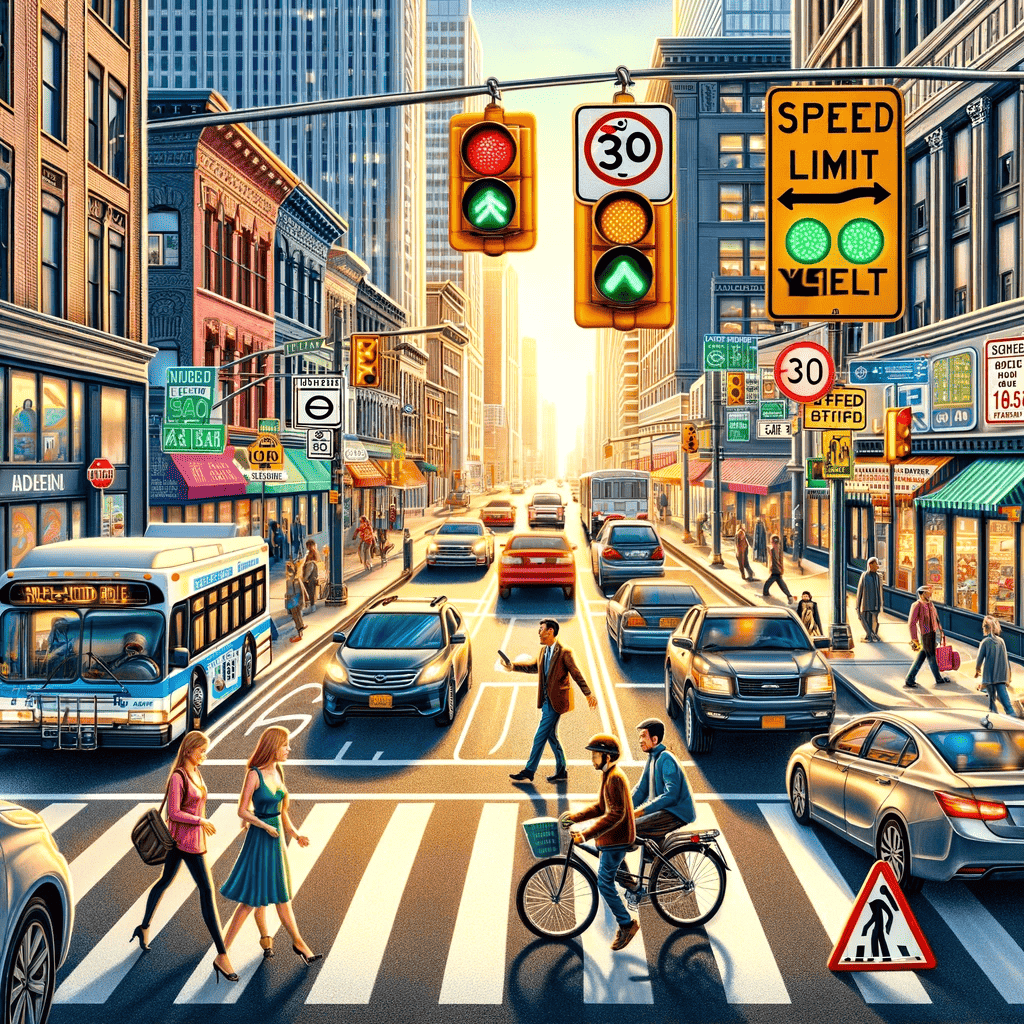Safe Driving in Cities

Driving safely in urban environments is a critical skill, especially given the unique challenges and hazards that city driving presents. This comprehensive guide, expanded from the original article in the Austin American-Statesman, offers detailed advice and strategies for navigating busy city streets safely. If you have been injured in an accident, it’s crucial to seek professional legal assistance to navigate the complexities of personal injury claims. Here are some essential tips and insights for safe urban driving:
1. Expect Slower Speeds and Congestion
Urban driving often involves navigating through congested roads with slow-moving traffic. Rush hour peaks between 7:00-9:00 a.m. and 4:00-6:00 p.m., and during these times, the risk of accidents increases. It’s important to adjust your expectations and prepare for delays. Planning your route in advance and avoiding rush hours can reduce stress and the likelihood of accidents.
2. Stay Alert and Focused
Maintaining focus is vital in city driving. Distractions like mobile phones, eating, or adjusting music can lead to serious accidents. Always keep your eyes on the road and avoid any activities that could divert your attention. For longer journeys, taking regular breaks can help maintain your concentration.
3. Respect Speed Limits
Adhering to speed limits is essential for safe urban driving. Speed limits in cities are set based on road conditions, traffic density, and potential hazards. Remember to adjust your speed according to the current road and weather conditions.
4. Maintain a Safe Following Distance
Use the “three-second rule” to maintain a safe distance from the vehicle ahead. This rule allows you enough time to react and stop safely, reducing the risk of rear-end collisions.
5. Signal and Check Blind Spots
Always use your turn signals to communicate your intentions to other drivers. Checking your blind spots before changing lanes or turning is crucial to avoid collisions.
6. Adhere to Traffic Laws
Obeying traffic laws and signals is fundamental to safe driving. This includes stopping at red lights, yielding when required, and following all road signs.
7. Avoid Driving Under the Influence
Driving under the influence of alcohol or drugs is illegal and significantly increases the risk of accidents. Always designate a sober driver or use alternative transportation if you have consumed alcohol.
8. Be Mindful of Weather Conditions
Weather conditions can dramatically affect driving safety. In adverse weather, reduce your speed, maintain a safe distance, and use headlights as necessary.
9. Regular Vehicle Maintenance
Keeping your vehicle in good condition is vital for safe driving. Regular checks on tires, brakes, lights, and fluid levels can prevent mechanical failures that lead to accidents.
10. Avoid Aggressive Driving
Aggressive driving behaviors like tailgating, excessive honking, or sudden lane changes can escalate into accidents. Maintain a calm and patient demeanor on the road.
11. Watch for Pedestrians and Cyclists
Urban areas are filled with pedestrians and cyclists. Always give them the right of way and be vigilant, especially near crosswalks and cycling lanes.
12. Plan for Parking
Understand the parking regulations in the city and consider using parking apps like Spot Hero, Secure-a-Spot, and ParKing to find and secure parking spots in advance.
Conclusion
Urban driving demands a heightened level of awareness and adaptability. By following these tips, you can navigate city streets more safely and confidently. However, if you find yourself in an unfortunate situation of a traffic accident, it’s crucial to get the right legal support. Contact our firm to speak to experienced personal injury lawyers and get support in managing your personal injury case. Our team is here to help you through every step of the process, ensuring that your rights are protected and you receive the compensation you deserve.


